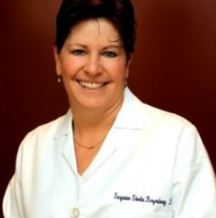“How do moles and freckles differ?”
I have a lot of freckles, but I'm not sure if I have any moles on my face as well. What is the difference between a mole and a freckle?
5 Answers
A mole is often called by the lay public a "beauty mark" or "birthmark." They tend to be darker than freckles, which are simply harmless areas of pigmentation that darken (as well as new ones appear) following a lot of sunexposure. Moles, for the most part are also harmless cosmetic nuisances, like freckles. However, some moles can actually wolves in sheeps' clothing and may harbor a potentially very serious cancer, a mole cancer known as malignant melanoma. If you notice any "beauty mark" change in size, shape, color, develop an irregular border or become itchy, tender, scaly or begin to bleed, you should see a dermatologist promptly.
Freckles are often present from childhood and get darker in the sun though usually tan in color. Solar lentigines are sunspots that tend to stay dark year round and develop later in age due to sun exposure. “Moles” or nevi tend to develop in childhood up until 30s. They have a network and are typically brown and tan. Changing nevi or new ones after age 30 should be looked at more closely by a board certified dermatologist especially if you have a large number of moles, sun damage, and a family history of skin cancer.
Both Moles and Freckles are caused by melanocytes which are the cells that give us our pigment. However, when these cells collect together in increased numbers in one area of skin they are called moles. Freckles are increased levels of pigment in areas of the skin like cheeks, nose, and arms that occur in people who are genetically predisposed to this. Examples are people of Irish decent
Freckles come from overstimulation of melanocytes secondary to sun exposure. They can start as early as 2-3 yrs old and come after recent exposure to UV radiation. Moles, on the other hand, known medically as nevi, are generally from birth, and are from nests of melanocytes.
Suzanne Sirota Rozenberg, DO, FAOCD, FAAD
Suzanne Sirota Rozenberg, DO, FAOCD, FAAD







